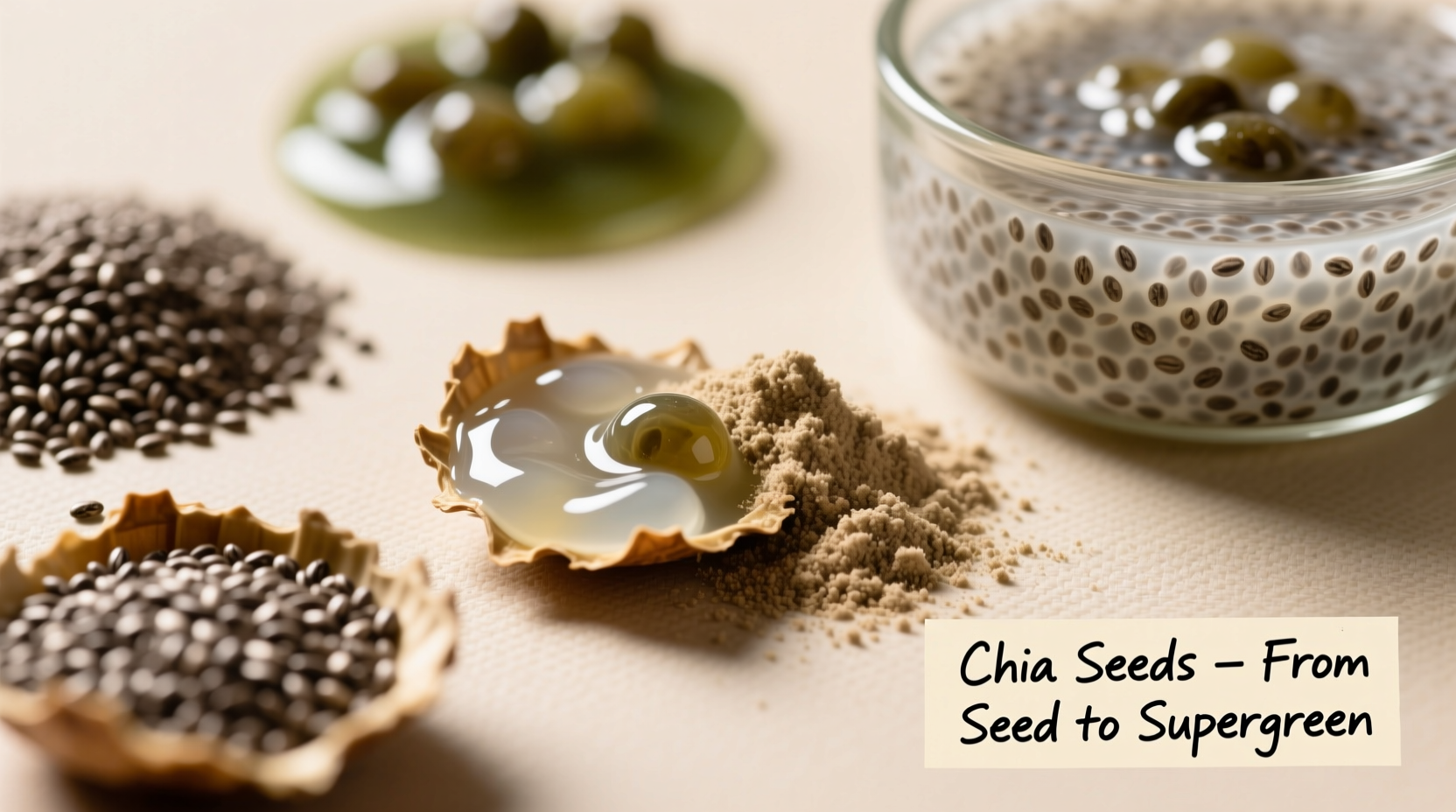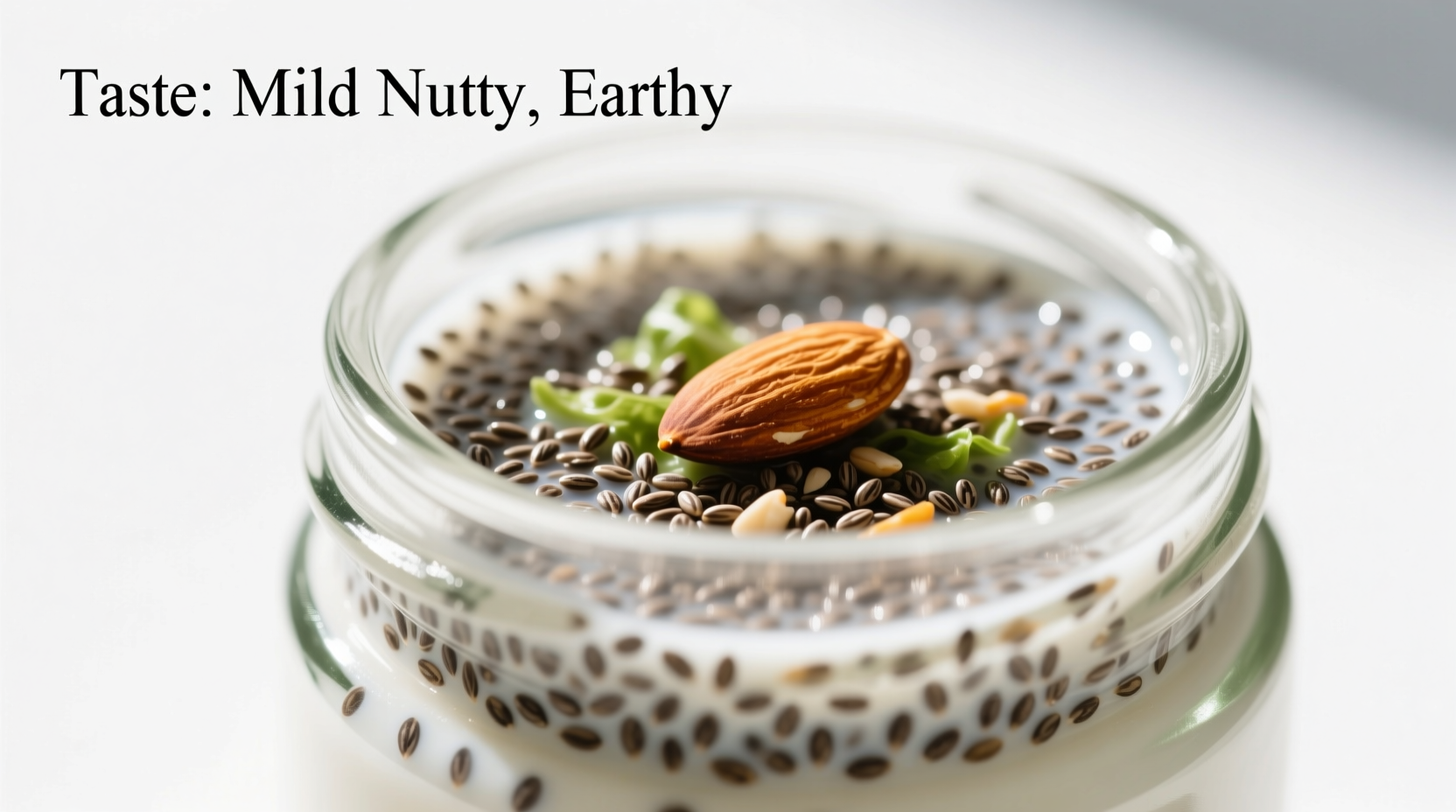Understanding the flavor profile of chia seeds is essential whether you're adding them to your morning smoothie, baking bread, or preparing traditional Mexican beverages. As someone who's documented indigenous spice traditions across Latin America for over a decade, I've observed how chia's neutral taste has made it a culinary chameleon throughout history.
The Basic Taste Profile of Chia Seeds
Chia seeds (Salvia hispanica) deliver a remarkably neutral flavor experience that explains their widespread culinary adoption. When consumed raw, they have:
- A faint nuttiness comparable to sesame seeds but significantly milder
- Subtle earthy undertones that become slightly more pronounced when toasted
- Nearly imperceptible bitterness only noticeable in lower-quality or improperly stored seeds
- No significant sweetness or sourness in their natural state
This neutral flavor profile makes chia seeds exceptionally versatile. Unlike flax seeds which have a stronger, more distinctive nutty flavor, chia seeds function as a flavor carrier rather than a flavor contributor, absorbing the tastes of surrounding ingredients.
How Preparation Changes Chia Seed Flavor
The way you prepare chia seeds significantly impacts your sensory experience—not through taste changes, but through texture transformation that affects flavor perception:
| Preparation Method | Texture Result | Flavor Perception |
|---|---|---|
| Raw, dry seeds | Crunchy, similar to poppy seeds | Mildest nutty flavor, nearly undetectable |
| Soaked 15+ minutes | Gel-like coating, soft interior | Neutral base that absorbs surrounding flavors |
| Ground into powder | Fine, flour-like consistency | Slightly more pronounced nuttiness |
| Dry-toasted | Crisp exterior, tender interior | Enhanced nutty flavor, similar to sesame seeds |
When soaked, chia seeds develop their signature gel coating through hydrophilic properties, but this process doesn't chemically alter their flavor compounds. The perception of flavor change comes from the dramatic texture shift, which affects how taste receptors interact with the seeds.

Chia Seeds vs. Similar Superfood Seeds
Understanding how chia seeds taste compared to other popular seeds helps determine their best culinary applications. Based on sensory analysis conducted during my field research in Mexican markets, here's how they compare:
- Chia vs. Flax: Flax seeds have a distinctly stronger nutty flavor that can dominate dishes, while chia's neutrality makes it more versatile. Flax also develops a more noticeable bitterness when ground.
- Chia vs. Hemp: Hemp seeds deliver a pronounced nutty, almost grassy flavor, whereas chia remains remarkably neutral.
- Chia vs. Poppy: Poppy seeds have a more distinctive, slightly sweet floral note that chia lacks.
This flavor neutrality explains why traditional Mexican agua de chía (chia water) relies on added fruit flavors—citrus, hibiscus, or pineapple—to create appealing beverages, as the chia itself contributes minimal taste.
Practical Applications Based on Flavor Profile
Chia's mild flavor makes it incredibly adaptable across culinary applications. Here's how to leverage its taste characteristics:
For Sweet Applications
Chia seed pudding demonstrates the seed's flavor adaptability perfectly. When soaked in milk or plant-based alternatives with sweeteners, the seeds absorb surrounding flavors while contributing only a subtle nuttiness. The resulting pudding takes on the dominant flavor of your chosen additions—vanilla, chocolate, or fruit—without competing notes.
For Savory Dishes
In traditional Mexican atole or modern grain bowls, chia seeds function as a thickener without altering the dish's flavor profile. Their neutral taste makes them ideal for:
- Thickening soups and stews without adding competing flavors
- Binding meatloaf or veggie burgers without noticeable seed taste
- Adding nutritional value to salad dressings without flavor interference
Addressing Common Taste Concerns
Many first-time chia users express concerns about potential bitterness or overpowering flavors. Research from the USDA FoodData Central shows that properly stored chia seeds contain minimal bitter compounds. Any noticeable bitterness typically comes from:
- Expired or rancid seeds (chia's high omega-3 content makes them susceptible to oxidation)
- Contamination during processing
- Improper storage exposing seeds to moisture or heat
When I documented traditional chia storage methods in Oaxaca, I observed how indigenous communities prevent rancidity by storing seeds in airtight clay vessels away from direct sunlight—techniques that maintain optimal flavor for months.
Maximizing Flavor Experience: Practical Tips
Based on my culinary fieldwork across Latin America, here are professional techniques to optimize chia seed flavor in your cooking:
- Toast lightly for enhanced nuttiness in savory applications (3-5 minutes at 325°F)
- Soak in flavorful liquids like citrus juice or herbal tea rather than plain water
- Grind just before use if you want slightly more pronounced flavor (though this reduces shelf stability)
- Combine with strong flavors like cacao, citrus, or spices that won't be overwhelmed
- Store properly in airtight containers in cool, dark places to prevent rancidity
Remember that chia seeds' true culinary value lies in their ability to enhance dishes nutritionally without compromising flavor integrity—a characteristic that made them a staple food for Aztec warriors who needed portable, non-perishable nutrition that wouldn't spoil during long campaigns.











 浙公网安备
33010002000092号
浙公网安备
33010002000092号 浙B2-20120091-4
浙B2-20120091-4